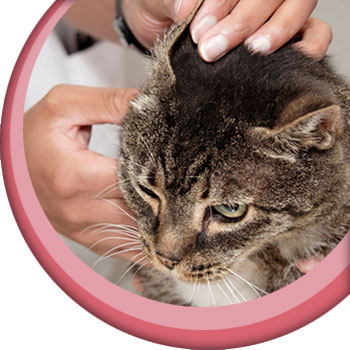How do I Use Ear Drops?
We understand that not all pets are particularly cooperative when it comes to taking their medication; hopefully this guide will give you some tips to make the job easier.
Ear drops will usually come in a bottle with a nozzle. They can be a bit tricky to master at first especially as your pet may not like having them put in. Watch out for them shaking their head after you have put them in or you may get covered!
• Gently invert the bottle a few times before use as the mixture may separate.
• Remove the cap and place the nozzle into the opening of the ear canal, you do not need to go too far down, just enough that the liquid enters the ear rather than going everywhere!
• Apply the directed amount of liquid by squeezing the bottle. Sometimes it is worth testing how much comes out on a piece of tissue the first time you use the drops in order that you know what to expect. If you do this make sure you wear gloves and dispose of the tissue straight away.
• Remove the bottle from the ear and then massage the outside of the ear with your hand to work the drops further down the ear canal. Your pet will usually enjoy this bit!
• You can wipe the top of the ear clean with cotton wool if any liquid has spilled, but don’t poke any down the ear.
• Clean the nozzle of the bottle and replace the cap ready for next time. If you are treating both ears, clean the nozzle between ears.


We hope that these general guides will help you but remember to always follow any specific instructions given by your vet as not all medications are the same. They may also tell you that you need to wear gloves to administer certain medications. If you are unsure always check with them as they won’t mind and would rather that you did it correctly.
Disclaimer: This website has been designed to offer information surrounding the use of antibiotics and infection control for pet owners. It does not replace advice from your veterinary surgeon. If you believe your pet is unwell or you have any questions relating to their treatment, please always contact your veterinary surgeon for advice.

